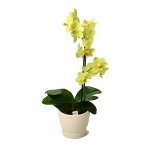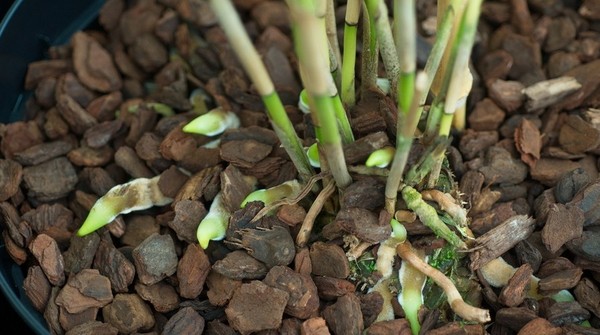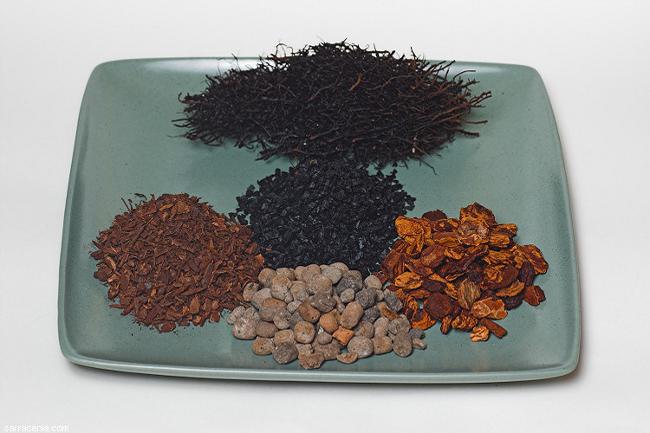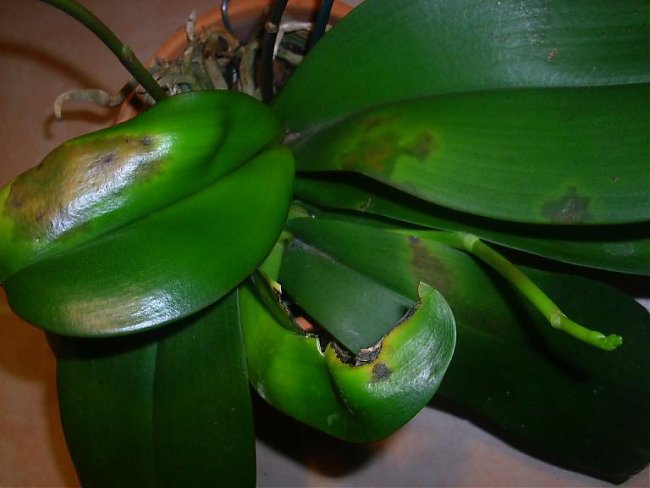Soil for orchids

Orchids belong to the genus of epiphytic plants. This means that orchids in nature are attached to another plant on which they live. The roots of plants are not in the ground, they get all the moisture they need from the air and during the rains. In view of these features, a special primer for orchids should be prepared.
The most common substrate for orchids can be bought at the store. If you can not buy it or just prefer to use your own mixes, can prepare a special ground for orchids. The soil composition for orchids should be determined independing on the pot in which the orchid grows, and its magnitude. For example, for young young orchids, you need to add water-intensive components to the substrate. But this is the case, if it grows not in a pot, but on a block or in a basket. For large plants that grow in pots, ingredients are needed that will not retain moisture for a long time. Also, when selecting substrate components for an orchid, the natural characteristics of this plant should be taken into account. Let the orchids epiphytic plants, but among them there are specimens that require a heavier primer. This includes the tsimbidium, which loves moist soil.
So, what can you use to make your own soil for orchids? Using the sample method, you can choose the best mixture for your orchid. The mixture may contain such components: sphagnum moss, tree bark, fern roots, vermiculite, perlite, polystyrene, expanded clay, peat and lowland peat, charcoal, coconut fiber, pine cones, leaf earth. We will tell in more detail about some elements.

The tree bark (deciduous trees or pine) can be found in the forest. The pine bark can be collected on growingtrees, but only if it easily lags behind the trunk. Knife can not cut off the bark. If pieces of bark do not exfoliate, do not take them so as not to damage the tree. Also, the bark can be collected from fallen or felled trees. In this case, you can take as much bark as you want. Just take a dry bark that does not rot. Rotten bark has other characteristics, besides, it contains pathogenic bacteria that will harm the roots of orchids.
Moss sphagnum, as well as the roots of the fern, can also be found in the forest. If you have the opportunity to go to the swamp,then it is there that collect the moss, since its marsh species is preferable. To get the roots of the fern, dig out the plant, remove the top part. The resulting root chop into small pieces.
Leaf Land you may need to add it to the mixture in which the cymbidium and other plants like it will grow. But the amount of leaf land should not be too large.
It should be noted that you do not need to use all elements for preparing soil for orchids. Always build on what you have. We give several compositions of substrates for orchids:
Charcoal and pine bark (1: 5): suitable for growing orchids in a room greenhouse or pot. This composition has very low moisture capacity and high air permeability;
Charcoal, chopped sphagnum moss and pinebark (1: 2: 5): this composition has a high moisture capacity. Growing orchids from such substrates in baskets or blocks in the room will not be a problem for you;
coal, peat, pine bark and leaf ground (1: 1: 1: 3): suitable for growing orchids that need enhanced nutrition (including cymbidiums).
Remember, the soil composition for orchids you can always choose yourself. But Do not make it too heavy for the roots of plants to rot.














